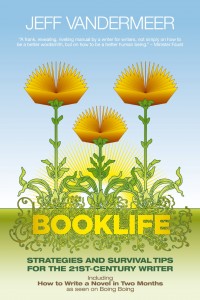Carol Penn-Romine is a Tennessee expat living in Los Angeles with her husband, scifi/fantasy author Andrew Penn Romine and the four cats who own them. She is a Le Cordon Bleu-trained chef and a tour guide specializing in culinary tours to Ireland and other destinations as requested. You can find her blog and published work at hungrypassport.com.
After years of writing countless magazine and newspaper articles, blog entries and portions of books, I’ve finally taken the plunge and begun a book of my own. The first step was crafting the proposal. Boo. Hiss. That’s not exactly how I wanted to spend my writing time, but it’s the only way most of us first-time book authors will ever get our books into print.
It’s been a learning process and a humbling one as well. Imagine how you’d feel if you were a strong, confident swimmer with many years of braving the ocean currents under your belt, only to be scooped up and tossed back into the kiddie pool by huge hands slipping water wings onto your suddenly tiny, unmuscled arms. I feel a bit like this, like I’m starting all over again. Yes it’s humbling, but it’s necessary.
And it has taught me a few things:
A book proposal is essentially a business plan. In it you spell out as specifically as possible what you want to do and how you plan to do it. My book is a collection of essays, each of which will stand alone, but all of which will mesh to form a larger narrative. In the section of the proposal where I present a thumbnail of each essay, what I’m doing is crafting an elevator pitch for each one, in addition to the elevator pitch for the book itself. Once I figured this out, those pitches became much easier to write.
Carefully select only what needs to go into the book, and resist the urge to throw in the kitchen sink, even if it’s a really cool kitchen sink. If you have something that’s good but that just doesn’t fit in the particular book you have in mind, don’t try to force it in there. Remember, this won’t be your only book. Keeping something good in reserve gives you valuable material to draw on for your next project and doesn’t dilute the one in front of you.
Show your personality, but be sure the prose is tight. Publishers already have way too much to read, so get your point across as succinctly as possible. If you’re relying on your folksy charm, hold it in reserve for later. Not that you want to use one voice in the proposal and then shift to another in the book, but you don’t want to use up good will of a publisher who is slogging through your precious prose.
Hotlink the articles and essays—including your previous publications—that you mention in your proposal. These days most proposals are sent to publishers electronically. Hotlinks allow them to quickly access what you’re referencing, whether it’s samples of your published work or something key to your proposal.
Gone are the days when publishers had generous marketing budgets to spend on their authors, especially on new ones. The more willing you are to get out there and promote your book, the more work you’ll save for them. So learn all you can about the segment of the market in which you’ll be competing and how you can help market the book, and detail this in your proposal. Also, if your prose would be perfect read aloud on the radio—and you’re willing to put your voice out there—be sure to mention this in the proposal.
Most important, take in all the advice you can get, even if you don’t use it all. Whether it comes from an agent, an editor or a trusted friend who is kind enough to beta read for you, you never know where a nugget of wisdom will come from, the very one that will help you craft the proposal you need to get your book off the ground.
